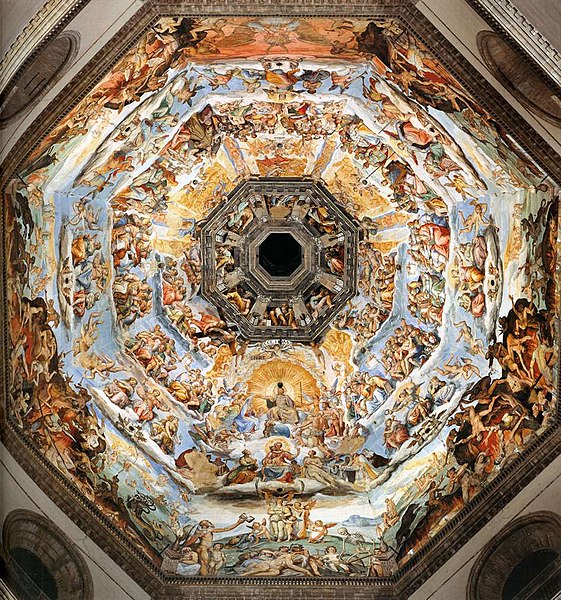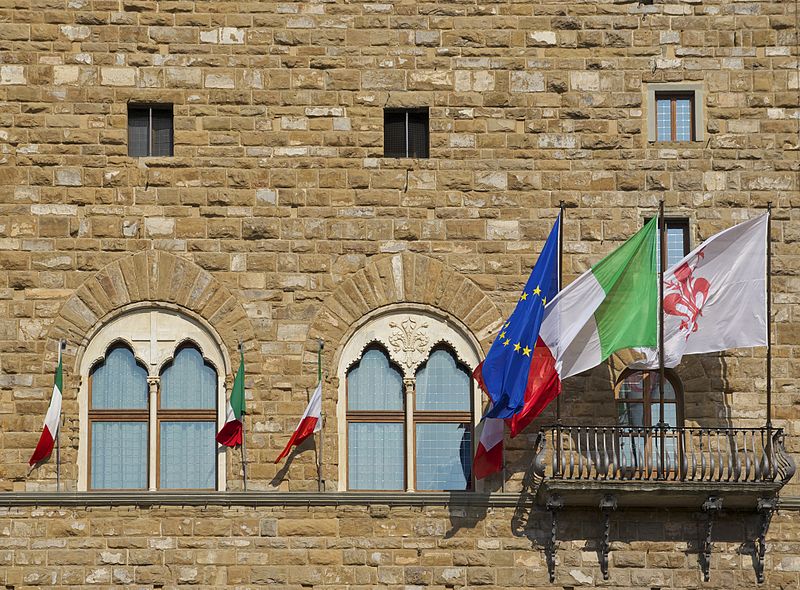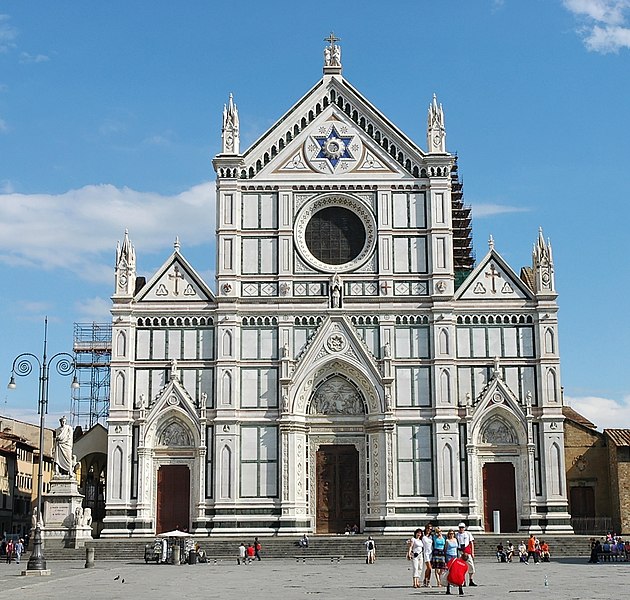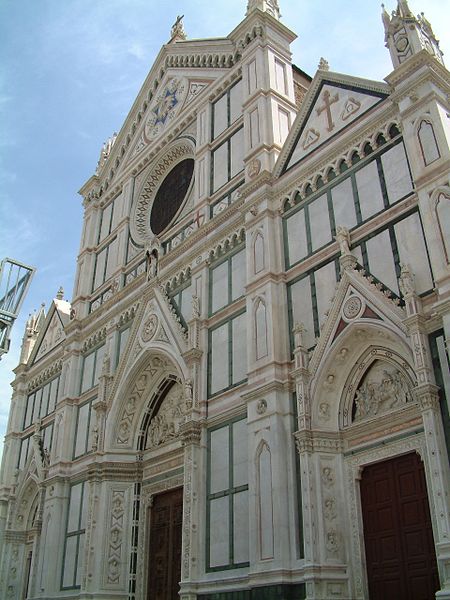Florence was a centre of medieval European trade and finance and one of the wealthiest cities of the time. It is considered the cradle of Renaissance. The city's historic center has been declared a UNESCO World Heritage Site. Today as the capital of the Tuscany region in Italy, Florence still exerts significant influence in arts, culture and politics.
Firenze
The "Cathedral Square, located in the heart of the historic center of Florence, is one of the most visited places in Europe and the world. Here we can find the Florence Cathedral with the Cupola del Brunelleschi, the Giotto's Campanile, the Florence Baptistery, the Loggia del Bigallo, the Opera del Duomo Museum, and the Arcivescovile and Canonici's palace. They are part of a UNESCO World Heritage Site.
Commonly known as the Duomo (cathedral), it was begun in 1296 in the Gothic style and completed structurally in 1436 with the dome. The exterior of the basilica is faced with polychrome marble panels in various shades of green and pink bordered by white and has an elaborate 19th-century Gothic Revival façade. The basilica is one of Italy's largest churches and it remains the largest brick dome ever constructed.
The Palazzo Vecchio ("Old Palace") is the town hall of the city. Completed in 1322, this massive, Romanesque, crenellated fortress-palace is among the most impressive town halls of Tuscany. Overlooking the square with its copy of Michelangelo's David statue as well the gallery of statues in the adjacent Loggia dei Lanzi, it is one of the most significant public places in Italy.
The Loggia dei Lanzi consists of wide arches open to the street, three bays wide and one bay deep. The arches rest on clustered pilasters with Corinthian capitals. The vivacious construction of the Loggia is in stark contrast with the severe architecture of the Palazzo Vecchio. It is effectively an open-air sculpture gallery of antique and Renaissance art including the Medici lions.
The Uffizi Gallery is a prominent art museum. One of the most important Italian museums, it is also one of the largest and best known in the world, and holds a collection of priceless works, particularly from the period of the Italian Renaissance. The building of Uffizi complex was begun in 1560 for Cosimo I de' Medici so as to accommodate the offices of the Florentine magistrates, hence the name uffizi, "offices". Over the years, more sections of the palace were recruited to exhibit paintings and sculpture. According to Vasari, the architect of the building, artists such as Leonardo da Vinci and Michelangelo gathered at the Uffizi "for beauty, for work and for recreation."
The Ponte Vecchio (Old Bridge), is a medieval stone closed-spandrel segmental arch bridge over the Arno River, noted for still having shops built along it, as was once common. Butchers initially occupied the shops; the present tenants are jewelers, art dealers and souvenir sellers. The bridge spans the Arno at its narrowest point where it is believed that a bridge was first built in Roman times.
Firenze
The Museo Nazionale del Bargello is Florence's second-ranking museum after the Uffizi known for having the largest Italian collection of gothic and Renaissance sculptures. The museum houses masterpieces by Michelangelo, such as his Bacchus, Madonna and Child, Brutus and David-Apollo. It also has a fine collection of ceramics, textile, tapestries, ivory, silver, armours and old coins.
It is the principal Franciscan church (begun in 1294) and the burial place of some of the most illustrious Italians, such as Michelangelo, Machiavelli, the philosopher Gentile and the composer Rossini, thus it is known also as the Temple of the Italian Glories (Tempio dell'Itale Glorie). It is the largest Franciscan church in the world. Its most notable features are its sixteen chapels, many of them decorated with frescoes by Giotto and his pupils, and its tombs and cenotaphs.
The Palazzo Pitti is a vast and mainly Renaissance palace. The core of the present palazzo dates from 1458 and was originally the town residence of Luca Pitti, an ambitious Florentine banker. In the late 18th century, the palazzo was used as a power base by Napoleon, and later served for a brief period as the principal royal palace of the newly united Italy. The palace and its contents were donated to the Italian people by King Victor Emmanuel III in 1919. Today The palazzo is the largest museum complex in Florence.
The Giardino di Bobolii is the home to a collection of sculptures dating from the 16th through the 18th centuries, with some Roman antiquities. The mid-16th-century garden style incorporated longer axial developments, wide gravel avenues, a considerable "built" element of stone, the lavish employment of statuary and fountains, and a proliferation of detail, coordinated in semi-private and public spaces that were informed by classical accents: grottos, nympheums, garden temples and the like. The openness of the garden, with an expansive view of the city, was unconventional for its time.
Firenze
It is the first great basilica in Florence, and is the city's principal Dominican church built by the Dominicans between 1279 and 1357. The church, the adjoining cloister, and chapter house contain a multiplicity of art treasures and funerary monuments. Especially famous are frescoes by masters of Gothic and early Renaissance.
The Gallery of the Academy of Florence is an art museum and is the home of Michelangelo's sculpture David. It also has other sculptures by Michelangelo and a collection of Renaissance paintings. The gallery was founded in 1784 and has housed the original David by Michelangelo since 1873.
San Marco is the name of a religious complex in Florence, Italy. It comprises a church and a convent. The convent, which is now a museum, has three claims to fame. During the 15th century it was home to two famous Dominicans, the painter Fra Angelico and the preacher Girolamo Savonarola. Also housed at the convent is a famous collection of manuscripts in a library built by Michelozzo.
The Michelangelo Square is a square with a panoramic view of Florence. This Florentine piazza was built In 1869 during which Florence was the capital of Italy and the whole city was involved in an urban renewal, the so-called "Risanamento" or the "Rebirth" of the city's neighborhoods. The square, dedicated to the Renaissance sculptor Michelangelo, has bronze copies of some of his marble works found elsewhere in Florence: the David and the four allegories of the Medici Chapel of San Lorenzo.





































